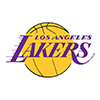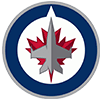Last night's NBA Draft contained a number of surprising developments, both with the selections and on the trade front. After Ben Simmons and Brandon Ingram were off the board, the proceedings were very difficult to predict. But now that the dust has settled, here is our outlook for each rookie selected with the first ten picks. Enjoy!
1) Ben Simmons, F, Philadelphia 76ers 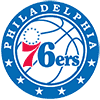
Height/Weight: 6-foot-10, 239 pounds
From: LSU
Age: 19
The Philadelphia 76ers selected Ben Simmons with the first overall pick in the 2016 NBA Draft with the hope that the Australian-born forward can serve as the linchpin of the team's long-term rebuilding process. The team had deliberated between Simmons and Brandon Ingram for the top selection, ultimately determining that Simmons' uncommon combination of size, athleticism and play-making abilities was too much to pass up. Simmons joins a Sixers frontcourt that already includes former lottery picks Jahlil Okafor, Joel Embiid, Nerlens Noel and Dario Saric, so it wouldn't be surprising if the team made a trade before the season to help clear up the logjam.
Widely viewed as the top high school recruit in the Class of 2015, Simmons was considered the odds-on favorite to be selected first overall in the draft before he even played a college game. During his brief time at LSU, Simmons certainly justified the hype, as he was a nearly unstoppable force in transition and showed an uncanny ability to get to the foul line. He finished his freshman season with averages of 19.2 points, 11.8 rebounds and 4.8 assists per game, capturing first-team All-SEC honors in the process.
Despite those impressive achievements, the 19-year-old phenom wasn't without his faults. In the half court, Simmons' unreliable jumper tended to limit his overall effectiveness, and on the defensive end, he was frequently disengaged. That latter characteristic proved particularly problematic against better competition, and Simmons ended up drawing a good deal of criticism when his Tigers failed to reach the NCAA Tournament. It's fair to wonder if Simmons' intensity and focus may continue to suffer on a Sixers squad that's still far away from contending, but the franchise is betting that the forward's unmatched physical gifts will override any lack of consistent effort.
Even with the Sixers' existing depth on the interior, Simmons shouldn't have too much difficulty winning a starting job, or at the very least, a prominent role, in coach Brett Brown's rotation. While power forward looks to be Simmons' more natural position, his ball-handling skills and quickness should also result in him seeing some time at small forward when Brown decides to run oversized lineups. With the opportunity to play right away to go along with a one-of-a-kind skill set, Simmons will enter the coming season as a leading candidate for the Rookie of the Year award.
2) Brandon Ingram, F, Los Angeles Lakers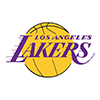
Height/Weight: 6-foot-9, 196 pounds
From: Duke
Age: 18
In a draft with two clear options at the top, taking Ingram with the second overall pick in the 2016 NBA Draft was an easy call for the Los Angeles Lakers after Ben Simmons was selected by the Philadelphia 76ers with the No. 1 overall pick. Luke Walton is taking over as the Lakers' head coach and will presumably bring some of the same philosophies that he helped implement with the Golden State Warriors in recent seasons. To that end, a player like Ingram who can switch on pick-and-rolls and guard up to three positions while also offering elite three-point shooting is an incredibly valuable addition.
Perimeter shooting and length on the wing are two things the Lakers really lacked last season, and Ingram brings both qualities in spades. The Kevin Durant comparisons are obviously unfair, but it's easy to see several similarities. Ingram has a very slight frame and will need to add some muscle in the coming seasons, but his 7-foot-3 wingspan and excellent lateral quickness allow him to be a nuisance on defense even when he appears to be overmatched physically. Like Durant, Ingram has the skills of a guard in the body of a forward, displaying an excellent handle and instincts, in addition to a very smooth and deadly stroke from distance. He should slot in as the Lakers' starting small forward from day one.
Ingram shot 44.2 percent from the field, 41 percent from beyond the arc and 68.2 percent from the free-throw line during his freshman season, and his numbers actually ticked up as the season progressed. He shot 42.1 percent from three-point range and 74.1 percent from the charity stripe in conference play, and given how pretty his shooting stroke is and how hard he works, he should be able to further improve his free-throw shooting as a pro. Ingram finished the year with averages of 17.3 points, 6.8 rebounds, 2.2 three-pointers, 2.0 assists, 1.4 blocks and 1.1 steals in 34.6 minutes per game, demonstrating his ability to contribute across the board.
Unlike Simmons, there are no questions about Ingram's intangibles. His effort on both ends of the court was never questioned during his freshman season, and he has yet to receive the high-maintenance tag that Simmons has earned. He brings a winning mentality that the Lakers lack in the post-Kobe Bryant era, and often shined late in games as the go-to option on a very talented Duke team. D'Angelo Russell, Jordan Clarkson and Julius Randle are all talented scorers, but none of them are as dynamic as Ingram, so he should assume the go-to role in that offense in either his first or second season.
3) Jaylen Brown, G/F, Boston Celtics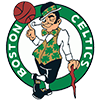
Height/Weight: 6-foot-7, 223 pounds
From: California
Age: 19
With a cadre of picks at their disposal, the Boston Celtics were at the epicenter of trade talks during the 2016 NBA Draft, but they chose to hold onto their third overall pick, using it to select Brown. He was a somewhat surprising choice, as Providence point guard Kris Dunn was believed by many to be the Celtics' preferred target at that spot in the draft, but the team brass evidently determined Brown's physical attributes and untapped potential made him the better choice.
Brown was one of this year's most divisive prospects among talent evaluators. The advanced metrics hate him, but there isn't a more impressive specimen on the wing in this class. He is a chiseled 6-foot-7 and 223 pounds, and showcases a seven-foot wingspan. However, the scouts and the numbers guys were both left scratching their heads at times during his up-and-down freshman season at Cal.
Brown profiles physically as the type of player who can guard up to three positions, switching on most pick-and-rolls and also serving as a flexible player on the offensive end. Unfortunately, those players are usually also tasked with stretching the floor, and Brown shot just 29.4 percent from three-point range in college, so he has some major work to do in that department. What is perhaps even more concerning is the fact that he shot just 48.2 percent on his shots inside the arc. A player with his athleticism and measurables who was a consensus top-five high school recruit should have dominated around the rim, and should have been able to get easy shots in both the half court and in transition. To make matters worse, Brown shot 65.4 percent from the free-throw line. Those awful shooting rates are why the advanced metrics don't suggest he warranted a lottery pick, much less a top-three pick.
There are some examples of players with Brown's warts eventually figuring it out, but it seems like there are more cautionary tales than success stories. If he were to embrace being a lockdown defender and work tirelessly to be a serviceable three-point shooter from the corners, then he would be the type of asset that any team would be happy to have in its rotation. However, if he sees himself as a one-on-one scorer who doesn't need to put the effort in on the defensive end, it could be tough for him to earn big minutes. As one of the few playoff-contending teams who selected in the top half of the draft, the Celtics won't have to rely on Brown to play much in his rookie season, but he'll still need to show some star qualities over the course of the year in order to justify the team's decision to draft him.
4) Dragan Bender, F, Phoenix Suns
Height/Weight: 7-foot-1, 225 pounds
From: Croatia
Age: 18
The Phoenix Suns claimed the first international player in Thursday's draft, nabbing Bender, a lengthy power forward from Croatia, with the fourth overall pick. The consensus top foreign player in the draft, Bender epitomizes the stretch four most teams are looking for in the modern pace-and-space NBA. He'll join a suddenly deep Suns frontcourt that also includes centers Alex Len and Tyson Chandler, along with fellow 2016 first-rounder and power forward Marquese Chriss.
The 18-year-old honed his craft in Israel the last two seasons, moving from the country's second-division league in 2014-15 to powerhouse Maccabi Tel Aviv in 2015-16. Bender struggled to distinguish himself with the club, averaging less than 11 minutes per game in seven Euroleague appearances, but that was to be expected in a league with much older and advanced competition. Even with the limited playing time, Bender still frequently provided glimpses of his high-end skills, and made tremendous strides from three-point range last season, which bodes well for his future in the NBA.
In addition to his prowess from distance, Bender is lauded for his willingness as a passer and his ability to make plays off the dribble. The latter attribute is particularly impressive, as Bender could leverage that skill when slower-footed big men are forced to guard him on the perimeter. Bender also runs the floor well for a frontcourt player, and has shown the ability to contribute in transition.
On the defensive end, Bender's game remains a little less refined. His lithe body makes him susceptible to getting outmuscled in the paint, and traditional post-up bigs in the mold of DeMarcus Cousins or Zach Randolph would likely have their way with Bender, despite the Croatian's height advantage and 9-foot-3 standing reach. Bender's towering frame would seem to make him a fit at center, but Bender's lack of physicality suggests he might not be versatile enough to play that position in the NBA.
That said, Bender isn't entirely devoid of any defensive strengths. His long arms create problems for opposing post players near the rim, and Bender has shown a knack for timing his blocks well, compensating for his lack of natural leaping ability. And thanks to a high basketball IQ and unusual mobility and foot speed for a man his size, Bender has proven quite adept at closing out as a help defender, and is capable of guarding similar stretch-four types and even some smaller wings.
Bender isn't expected to make a splash in his first season on the level of last year's top European rookie, Kristaps Porzingis, but his comfort on the perimeter on both ends of the floor figure to make for a fairly smooth transition to the more up-tempo play of the NBA.
5) Kris Dunn, G, Minnesota Timberwolves
Height/Weight: 6-foot-4, 205 pounds
From: Providence
Age: 22
After forward and wing players dominated the first four picks of the 2016 NBA Draft, the Minnesota Timberwolves elected to break that trend, nabbing Dunn with the fifth overall pick. At the time of the selection, the Timberwolves were said to be considering potential trades for Dunn -- including one that would have sent Jimmy Butler to Minnesota -- but the team chose to keep the point guard. He'll join a deep Timberwolves backcourt that already features Ricky Rubio, Zach LaVine and last year's first-round selection, Tyus Jones, any of whom could be dealt at a later date to open up more floor time for Dunn.
Whenever a player like goes from being off the NBA radar as a freshman to being a consensus lottery pick as a 22-year-old, there are some red flags regarding how they project at the next level. Dunn fits squarely in this box, but he also offers length and athleticism that many older draftees lack. A muscular 6-foot-4 with a 6-foot-10 wingspan, Dunn will be a defensive force against point guards and shooting guards as soon as he steps on an NBA court. He was a medical redshirt in his second year at Providence and went on to average 2.7 steals per game as a sophomore and 2.5 steals as a junior. Additionally, he averaged over 15 points, six assists and five rebounds per game in each of his last two seasons en route to back-to-back Big East Player of the Year honors.
Dunn shot 37.2 percent on 3.4 attempts per game from three-point range last season, and while he could be a serviceable three-point shooter on open looks above the break and on corner treys, long-range shooting does not project to be a strength. This is rightfully concerning, as it takes a special player in the mold of Russell Westbrook or John Wall to be a top-flight NBA point guard while being a subpar shooter from beyond the arc. Of course, considering the work Dunn put in during college to get himself to this point, it is always possible that he turns himself into an above-average shooter, but that shouldn't be the expectation.
His size allows him to survey the floor and make excellent reads in the flow of the offense, but he will be challenged to shoot open jumpers initially as defenses figure to go under pick-and-rolls until he can show the ability to make them pay from 18 feet and beyond. Where Dunn really excels on offense is in the open court, as he can finish above the rim and set up teammates in transition. Dunn is also an excellent defensive rebounder for his position, which helps lead to grab and go fast breaks.
6) Buddy Hield, G, New Orleans Pelicans
Height/Weight: 6-foot-5, 212 pounds
From: Oklahoma
Age: 22
No team was decimated by injuries -- particularly in its backcourt -- quite like the New Orleans Pelicans last season. With Eric Gordon set to become a free agent this offseason and the health of its remaining guards no longer taken as a given, the Pelicans made upgrading the shooting guard spot a priority, tabbing Hield with the sixth overall pick in the 2016 NBA Draft. The Oklahoma standout is likely already the best three-point shooter on the roster, and could parlay that attribute to a meaningful rotation spot right away. However, he'll likely have to settle for playing behind Jrue Holiday and Tyreke Evans, who both figure to open the season in starting backcourt roles if health permits.
Few players in this draft, if any, have a defining skill as established as Hield's ability to make it rain from downtown. He hit 45.7 percent of his three-point attempts as a college senior, and did so while attempting 8.7 treys per game. Additionally, he made 55.2 percent of two-pointers and also hit his free throws at an 88 percent clip. Indeed, he was essentially the Stephen Curry of college basketball, enabling him to claim Big 12 Player of the Year honors for the second straight year.
Hield's ability to shoot from beyond the NBA arc may not be in question, but many other aspects of his game are. He was better at getting to the rack in college than many gave him credit for, but without elite athleticism, it's not clear how that will translate against bigger, faster and more athletic players. High-end college defenders were able to bottle him up in one-on-one situations, and he'll be going against players of that caliber every night as a pro. He also could end up being a below-average defender, as he lacks the size to check the league's bigger shooting guards, and he doesn't have the lateral quickness to match up with point guards.
Hield takes very good care of his body, has an excellent work ethic and is a great teammate. Those traits will help him at the next level. He's not in danger of washing out of the league in a few seasons -- his ability to shoot will keep him around for a decade -- but it's possible that he never becomes more than a quality reserve player due to his lack of an all-around game.
7) Jamal Murray, G, Denver Nuggets
Height/Weight: 6-foot-5, 201 pounds
From: Kentucky
Age: 19
A year after selecting a point guard in Emmanuel Mudiay at seventh overall, the Nuggets went back to that well again Thursday, tabbing Murray at the same spot in the 2016 NBA Draft. Unlike Mudiay, Murray is a silky shooter who is capable of playing both backcourt spots. In addition to Mudiay, Murray will have to fend off incumbent starting shooting guard Gary Harris for court time, along with sixth man extraordinaire Will Barton and the Nuggets' 19th overall pick, Malik Beasley.
Murray emerged from his freshman season as the top draft prospect on a loaded Kentucky roster after displaying an uncommon knack for filling it up. He shot 45.4 percent from the field, 40.8 percent from three-point range and 78.3 percent from the free-throw line en route to a very efficient 20 points per game. He was 18 years old for most of the season, which makes those numbers all the more impressive. Moreover, Murray was even better in conference play, upping his accuracy marks to 47.6 percent from the field, 44.4 percent from three-point range and 80.8 percent from the charity stripe.
Murray doesn't have elite athleticism, but makes up for it with a good motor. He regularly crashed the defensive glass in college, averaging 5.2 rebounds per game despite standing just 6-foot-5. Unfortunately, despite showcasing great effort, he doesn't offer much length, boasting only a 6-foot-7 wingspan, and his lack of lateral quickness probably means he won't be more than an average defender in the NBA. When possible, the Nuggets may try to hide Murray by assigning him to guard the opponent's worst scorer, but there will be nights when he is overmatched.
The case can be made that like Eric Bledsoe before him, Murray played out of position at Kentucky, as he had to share the court with two point guards who lacked his scoring prowess (Tyler Ulis and Isaiah Briscoe), and therefore had no choice but to play primarily off the ball. Many believe he has the skills to transition into a point guard, but Murray will likely have to wait for Mudiay to fail first before getting an extended look in that role. For now, the Nuggets will depend on Murray and Will Barton to serve as the primary scorers in the backcourt, while Mudiay functions as the top playmaker and Harris profiles as the best defensive stopper.
8) Marquese Chriss, F, Phoenix Suns
Height/Weight: 6-foot-10, 233 pounds
From: Washington
Age: 18
The Phoenix Suns stepped up to produce the first trade in the 2016 NBA Draft acquiring the eighth overall pick from the Sacramento Kings to select Chriss, an upside-laden power forward from Washington. In order to get the 18-year-old, the Suns shipped out two of their three first-rounders (the 13th and 28th overall pick) and packaged a 2020 second-round pick. The addition of Chriss along with Dragan Bender at fourth overall gives the Suns a diverse tandem at power forward, and the team is hoping at least one of them settles in as a long-term option at the position.
Those who follow the college game closely will no doubt be a little surprised at how high Chriss, an unherald recruit entering his freshman season, went in the draft, but he offers elite size and above-the-rim athleticism that NBA teams crave, while also showing a projectable three-point stroke and excellent makeup. In a draft with few options outside of Ben Simmons and Brandon Ingram who offer star-level upside, Chriss stands out as a player with the tools to really blossom into a special player over the coming seasons.
From a physical standpoint, he's ready to play at the highest level, but there are aspects of his game that he really needs to work on in order to be a 30-plus minute-per-game contributor. He fouled out of 15 of his 34 games during his lone college season, failing to play even 25 minutes in 11 of those 15 contests. There have been plenty of big men who have cut their foul rates drastically as they mature, and Chriss has only been playing competitively for four years, so it's understandable that he's a little behind the curve. That said, if he doesn't really improve that area of the game, he'll be destined to be a role player.
He also lacks the rebounding track record one hopes to see from a lottery-worthy big man. Of the college forwards and centers who went among the top 20 picks, Chriss had the worst rebounding rate per 100 possessions (11.1), despite having as much length and leaping ability as anyone.
On a positive note, Chriss shot 53 percent from the field, 35 percent from three-point range and 68.5 percent from the free throw line as a freshman. Those shooting marks are very impressive for a 6-foot-10 forward with his athleticism and lack of experience. He also averaged 1.6 blocks and 0.9 steals in 24.9 minutes per game, which offers a glimpse of his defensive potential if he can find a way to remain aggressive while cutting down on the fouls.
9) Jakob Poeltl, C, Toronto Raptors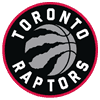
Height/Weight: 7-foot-1, 239 pounds
From: Utah
Age: 20
The Toronto Raptors have historically coveted international players in drafts and spent their ninth overall selection on Poeltl, an Austrian-born center who honed his craft at Utah for two seasons. Five years ago to the date, the Raptors tabbed Lithuanian center Jonas Valanciunas with their lottery choice, and now Poeltl will have the privilege of beginning his career as Valanciunas' understudy. The Raptors aren't expected to re-sign postseason standout Bismack Biyombo this summer, leaving little competition for Poeltl for the backup role.
A quick glance at the 7-foot-1 Poeltl may lead one to assume he's a typical plodding post player -- the kind the NBA game has been moving away from for several years. However, that assertion overlooks the finer points of the 20-year-old's game.
Firstly, Poeltl is an excellent passer; perhaps not on the level of fellow lottery picks Dragan Bender or Domantas Sabonis, but just a notch below those two in terms of passing big men in the entire draft class. This skill could allow him to occupy the same kind of role Mason Plumlee assumed last season with the Trail Blazers, in which he worked with the guards on dribble handoffs and complex perimeter schemes designed to get the wing scorers favorable matchups.
Poeltl also demonstrates well above-average lateral quickness for a big man. This is incredibly valuable, as it will allow him to hold his own when he gets switched onto a quicker wing. He will still get beat sometimes, but he won't be a complete pushover in those situations.
Passing and lateral quickness are the two traits that may not jump out when glancing at Poeltl's numbers at Utah. What does stand out, however, is that he shot 65.8 percent from the field across his pair of college seasons, illustrating his ability to finish with a soft touch around the rim. He also shot 69.2 percent from the free-throw line in his sophomore season, which is a completely passable mark for a player his size.
Poeltl won't be an elite rebounder or rim protector and in fact often struggled when matched up with those type of players in college, but he can average or better in those departments, and he has the all-around skills that few seven footers can claim. However, with Valanciunas under contract through the 2019-2020 season, it may take a while before Poeltl gets an extended chance to show the Raptors what he's fully capable of doing.
10) Thon Maker, F/C, Milwaukee Bucks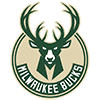
Height/Weight: 7-foot-1, 216 pounds
From: Athlete Institute (Canada)
Age: 19
Widely touted as a back-end first-round pick or even a second-round selection for most of the pre-draft process, Maker's stock gained some unexpected helium in the hours leading up to the 2016 NBA Draft. Multiple teams were reportedly interested in trading up in the draft for a chance to grab Maker, but it was the Milwaukee Bucks who stepped up to grab the big man at 10th overall, marking an impressive rise for the draft's biggest enigma.
Maker, a Sudanese refugee, wasn't exposed to the game of basketball until he was 14 years old, but proved to be a quick study of the sport. Across stops at three different North American high schools, Maker emerged as one of the most coveted recruits for the Class of 2015, but he ultimately chose to stay at Athlete Institute an extra year and reclassify himself as a member of the Class of 2016, making him eligible for this year's draft as a 19-year-old. Upon getting selected by the Bucks, Maker became the first player to go from the prep ranks to the first round of the draft since 2004.
At a lanky 7-foot-1 and with a relentless motor, Maker matches up well athletically with just about any frontcourt prospect in the draft. His 32-inch vertical jump at the NBA Combine was the best anybody his height or taller had ever recorded in the history of the event, and that sort of springiness suggests he could develop into a top-notch shot blocker.
Still, huge questions linger about the rest of his game. Maker's late arrival to basketball undoubtedly makes him a bit unpolished in some of the finer points of the game, particularly on the offensive end. While he's had little difficulty scoring in the prep ranks, his jump shot remains faulty, and he has yet to truly test himself against elite talent outside of showcase events. After bypassing college and opportunities to play overseas, Maker enters the NBA with less experience against higher-quality competition than any other player in this draft class.
Maker's relatively obscure background and inhuman length and athleticism will undoubtedly elicit comparisons to the Bucks' 2013 first-round pick, Giannis Antetokounmpo, but even he was more polished at this stage in his career than Maker. Though the Bucks are looking to move on from starting center Greg Monroe ahead of the upcoming season, it would be quite surprising if Maker was deemed ready to play major minutes as a rookie. He looks to be a project player who could be a couple years away from being a regular contributor.














